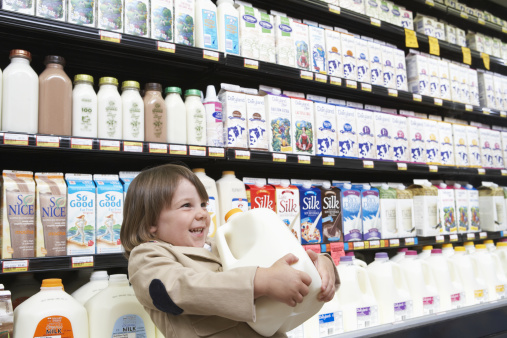This post may contain links from our sponsors and affiliates, and Flywheel Publishing may receive
compensation for actions taken through them.

In 2013, U.S. milk production totaled 201 billion pounds, according to the U.S. Department of Agriculture (USDA), up 0.3% over 2012 production. The number of milk cows declined 0.1%, however, to 9.22 million, and the average production per cow rose 102 pounds to 21,822 pounds. Average annual production per cow is up 15.1% since 2004, according to the USDA.
At the same time that production is rising slightly, export demand is soaring. The U.S. Dairy Export Council reports that exports of milk powder, cheese, butterfat, whey and lactose rose 19% year-over-year in January 2013, and that the total value of those exports rose 35% to $583.7 million. Some 14.5% of all U.S. milk production was exported in January, up from 12.3% in January 2013.
At least part of the explanation for the rise in exports is the lower demand for milk in the United States. A USDA study from May of last year showed that in the 30-year period between 1977-78 and 2007-08, the portion of preadolescent children who did not drink any fluid milk on any given day doubled, from 12% to 24%, while the percentage that drank milk at least three times a day fell from 31% to 18%. Dairy farmers have had to turn to exports to make up the difference.
Perhaps even more responsible for the rise in milk prices has been the improving global economy, especially in emerging markets. As people get relatively richer, once-expensive foods like beef, pork and milk become more affordable. According to the USDA, beef exports rose 5% in January, and the forecast for 2014 calls for total beef exports of 2.435 billion pounds. Pork exports rose 4.5% in January, helped along by Americans who are substituting pork for higher priced beef, which has the effect of raising pork prices as well.
Lower production in the United States has a few obvious causes. California, the country’s largest milk producer, has suffered from drought, forcing dairy farmers to import hay from outside the state and driving up costs. Herds were also culled a few years ago when corn prices skyrocketed. The number of cows peaked at 9.32 million in 2008 and dropped to 9.12 million in 2010 before rising again to 9.22 million last year.
From mid-2010 through the first few months of 2013, the rise in exports was more or less steady at around 140,000 metric tons per month. Then exports spiked to near 190,000 metric tons per month, before falling back somewhat to around 163,000 metric tons. Prices have moved commensurately.
U.S. consumers are already paying more for milk and other dairy products. In February, dairy prices rose 5.1% month-over-month and 27% year-over-year according to the USDA.
Supermarket prices for milk could soon be $1 a gallon higher than they were a year ago, but some analysts suggest that prices will start to fall soon. After all, when prices reach an all-time high, it is hard to predict that they will continue to climb indefinitely.
Get Ready To Retire (Sponsored)
Start by taking a quick retirement quiz from SmartAsset that will match you with up to 3 financial advisors that serve your area and beyond in 5 minutes, or less.
Each advisor has been vetted by SmartAsset and is held to a fiduciary standard to act in your best interests.
Here’s how it works:
1. Answer SmartAsset advisor match quiz
2. Review your pre-screened matches at your leisure. Check out the advisors’ profiles.
3. Speak with advisors at no cost to you. Have an introductory call on the phone or introduction in person and choose whom to work with in the future
Get started right here.
Thank you for reading! Have some feedback for us?
Contact the 24/7 Wall St. editorial team.




